The giant stone faces of Bayon have become one of the most recognizable images connected to classic Khmer art and architecture. The state-temple, Bayon is set at the center of the city Angkot Wat.


As we approached Bayon my mom and I stopped and stood stunned before it. It was like nothing else I had ever seen before. The Bayon was built nearly 100 years after Angkor Wat in late 12th century to early 13th century, by the King Jayavarman VII.
Bayon remains one of the most enigmatic temples of the Angkor group. Its symbolism, original form and subsequent changes and constructions have not yet been untangled making it a magical place to explore. The architectural scale and composition of the Bayon exudes grandness and creates balance and harmony.
Despite this seemingly simple plan, the arrangement of the Bayon is complex, with a maze of galleries, passages and steps connected in a way that make the levels practically indistinguishable and creates dim lighting, narrow walkways, and low ceilings.


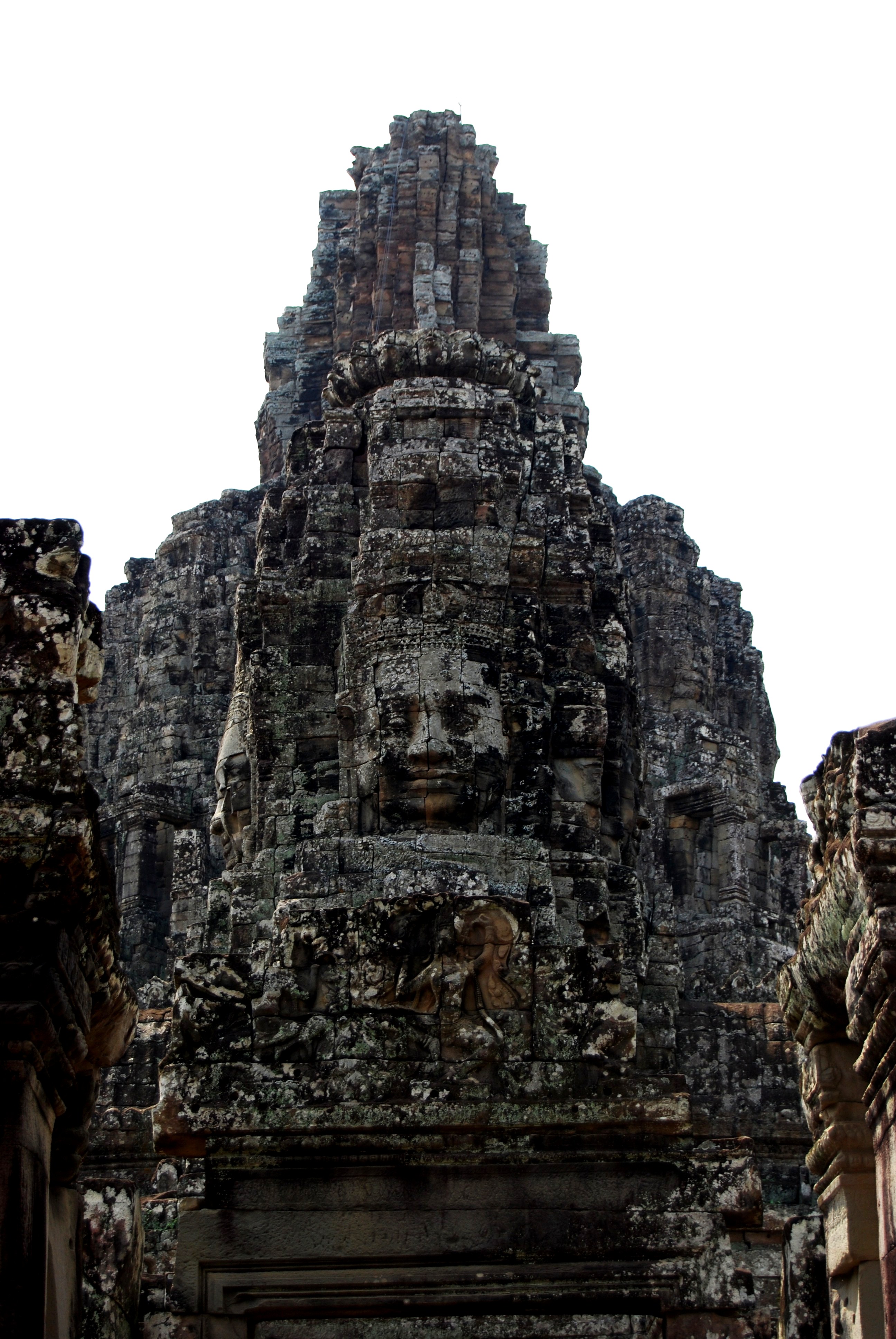
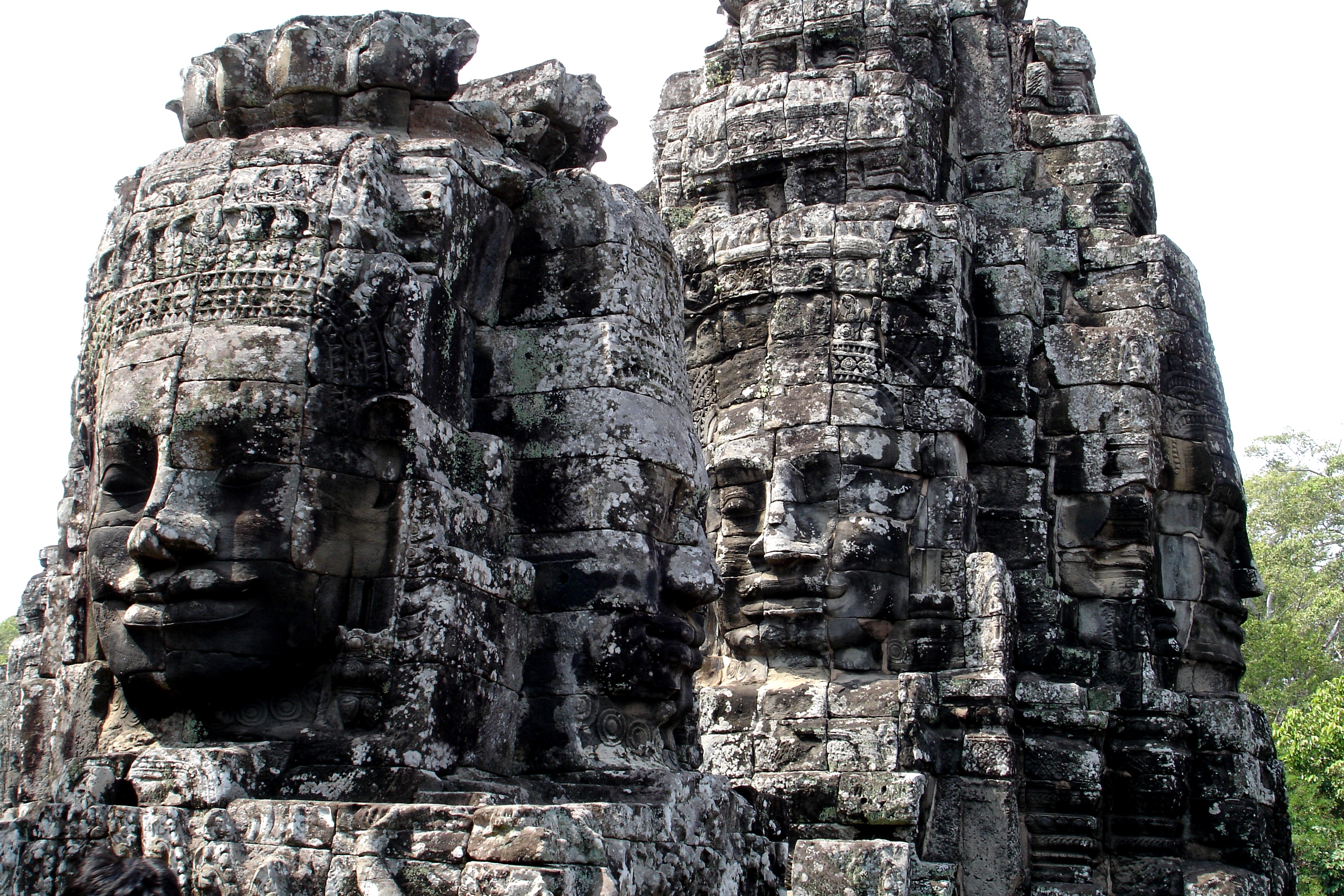
The surrounding jungle makes Bayon a bit dark so its best to visit it during the day. This dense jungle camouflages this temples position in relation to other structures at Angkor. Because of this it was not known for some time that the Bayon stands in the exact center of the city of Angkor Thom.
The best part of Bayon for me was the upper level where the stone faces are.
There are 54 standing towers, most but not all sporting four carved faces oriented toward the cardinal points North, East, South and West. Over 200 large faces give this temple its majestic character.
Walking amongst these larger-than-life carved stone smiling faces is truly an experience that everyone must have when in Cambodia. Being next to all these smiling 13-foot tall faces, with all 432 eyes closed, was quite intriguing.
The faces with slightly curving lips, eyes placed in shadow by the lowered lids utter not a word and yet force you to think. It is generally accepted that four faces on each of the tower are images of the bodhisattva Avalokitesvara and that they signify the omnipresence of the king. The characteristics of this faces – a broad forehead, downcast eyes, wild nostrils, thick lips that curl upwards slightly at the ends-combine to reflect the famous ‘Smile of Angkor’.
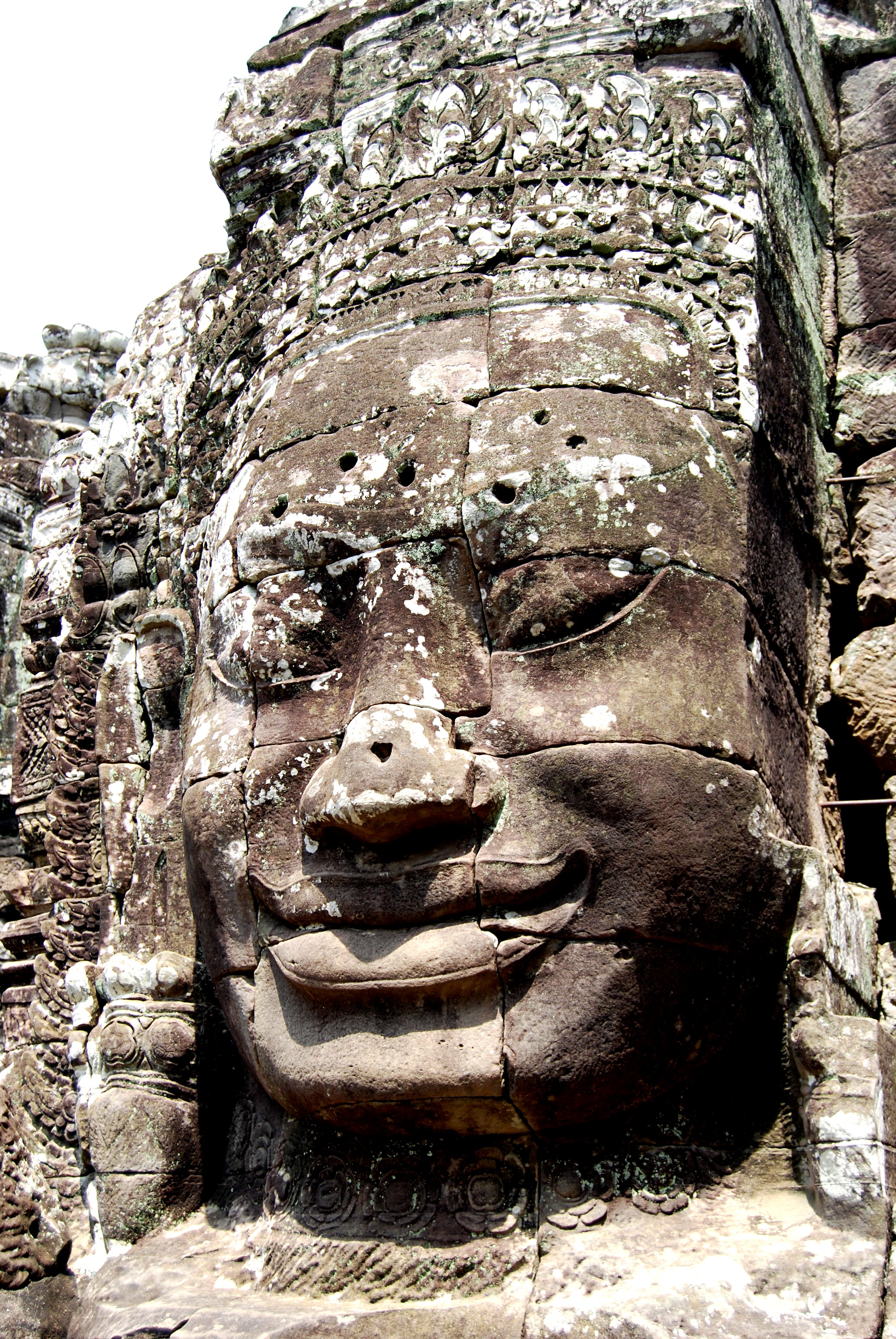
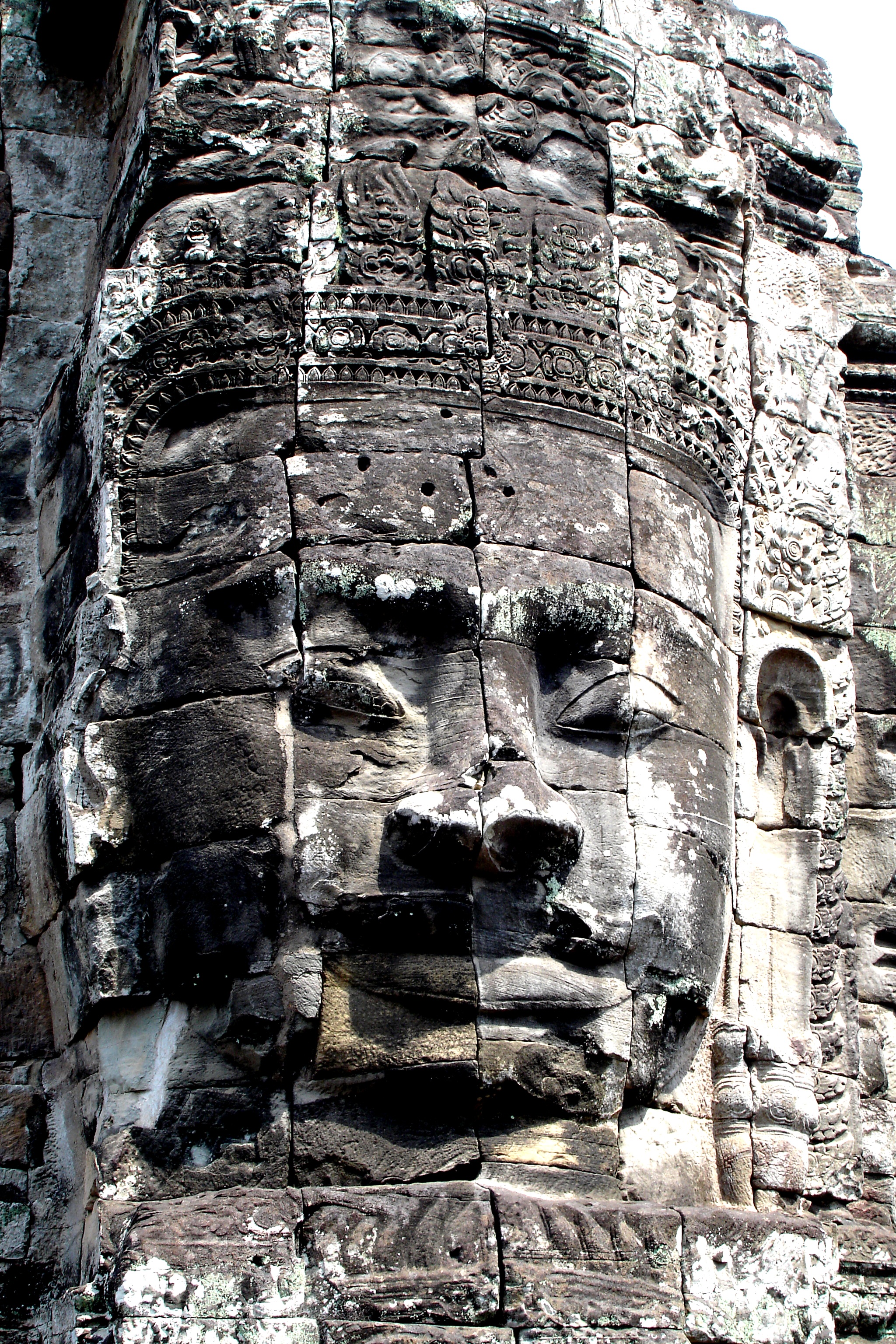
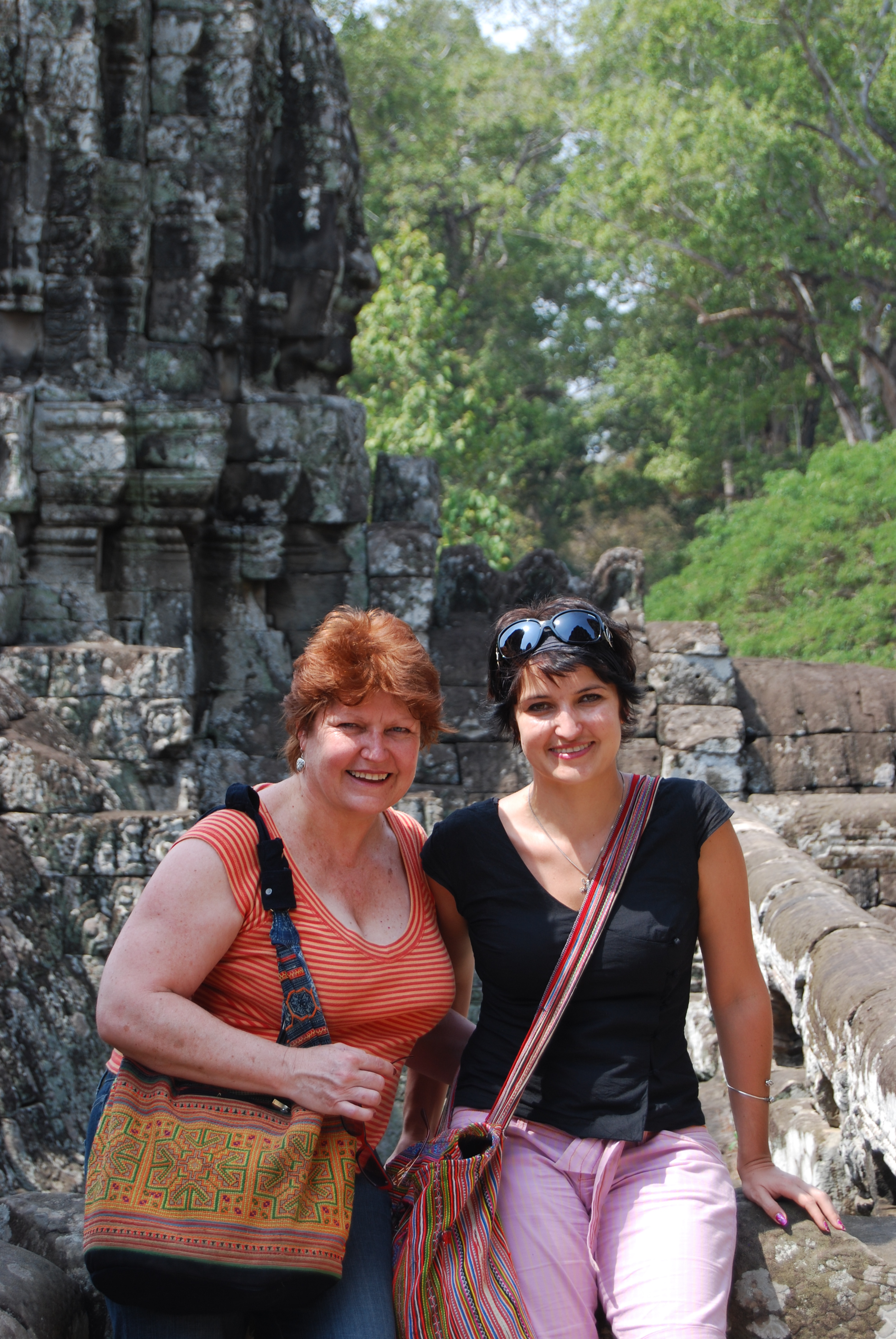
I read that the smiles and closed eyes possibly represent “an all-knowing state of inner peace, and perhaps a state of Nirvana.” I also read that, “according to Mahayana doctrine, Avalokiteshvara is the bodhisattva who has made a great vow to assist sentient beings in times of difficulty, and to postpone his own Buddhahood until he has assisted every sentient being in achieving Nirvana.” No wonder I was intrigued with the smiling faces.
The multitude of faces at different levels affords endless fascination.



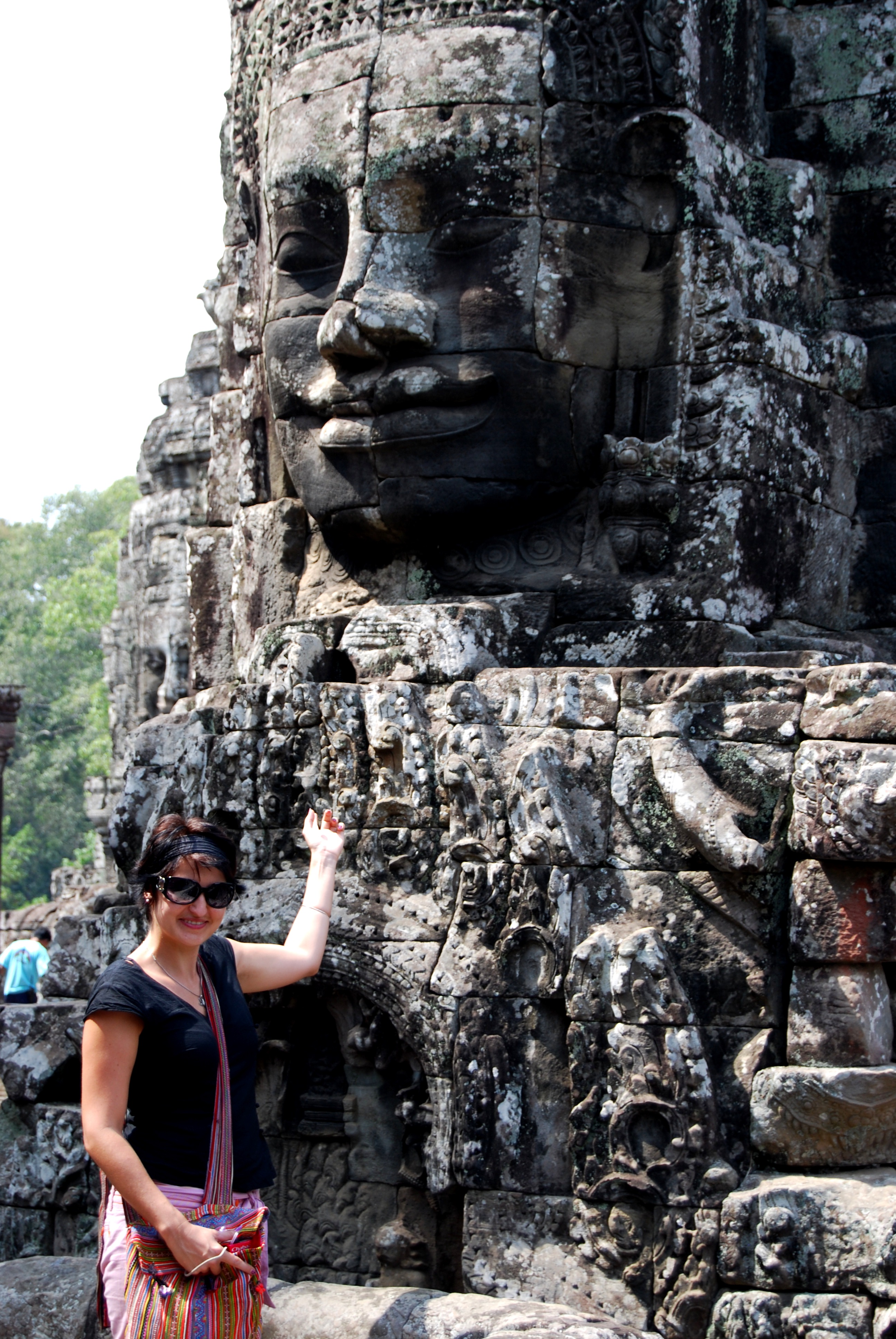
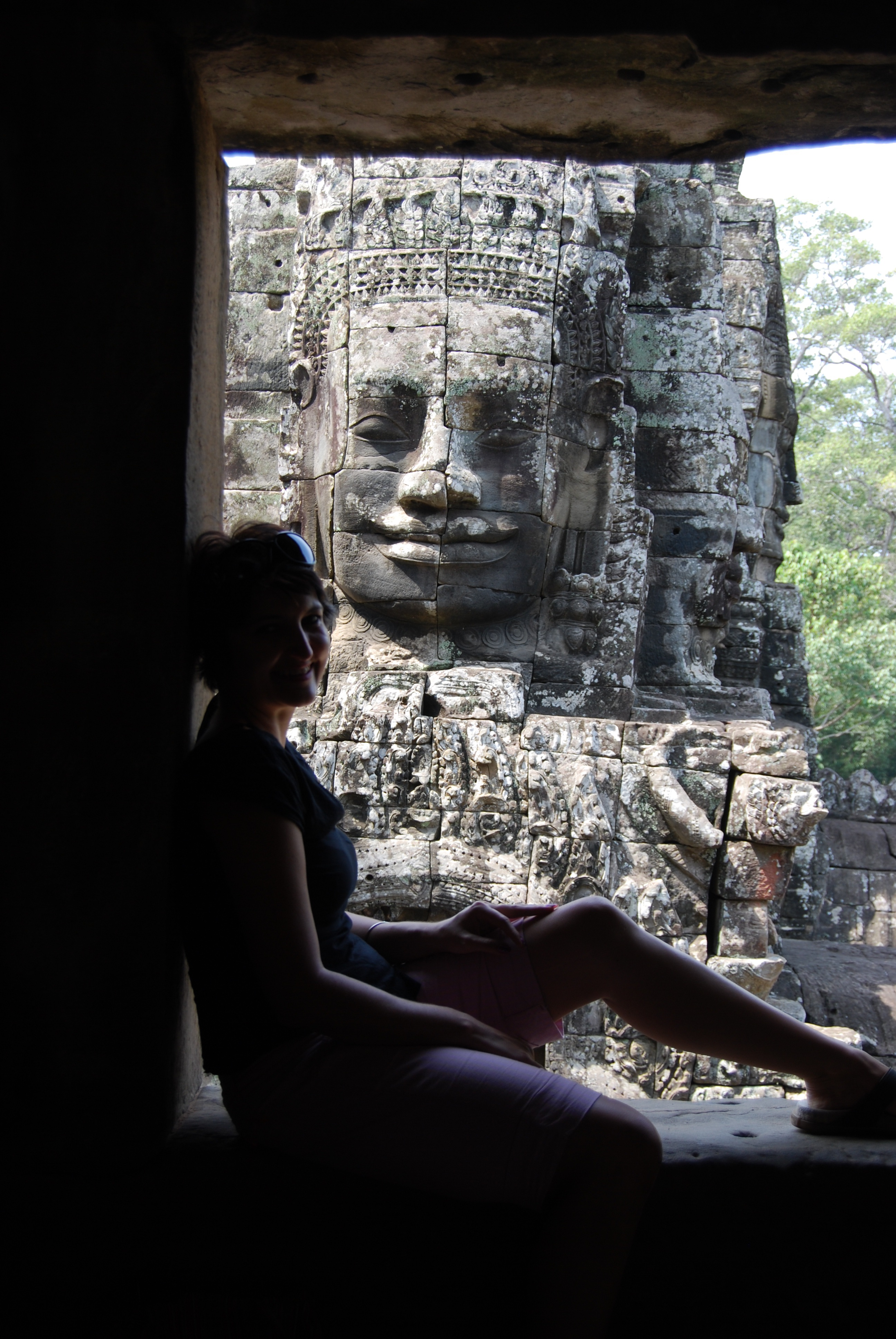
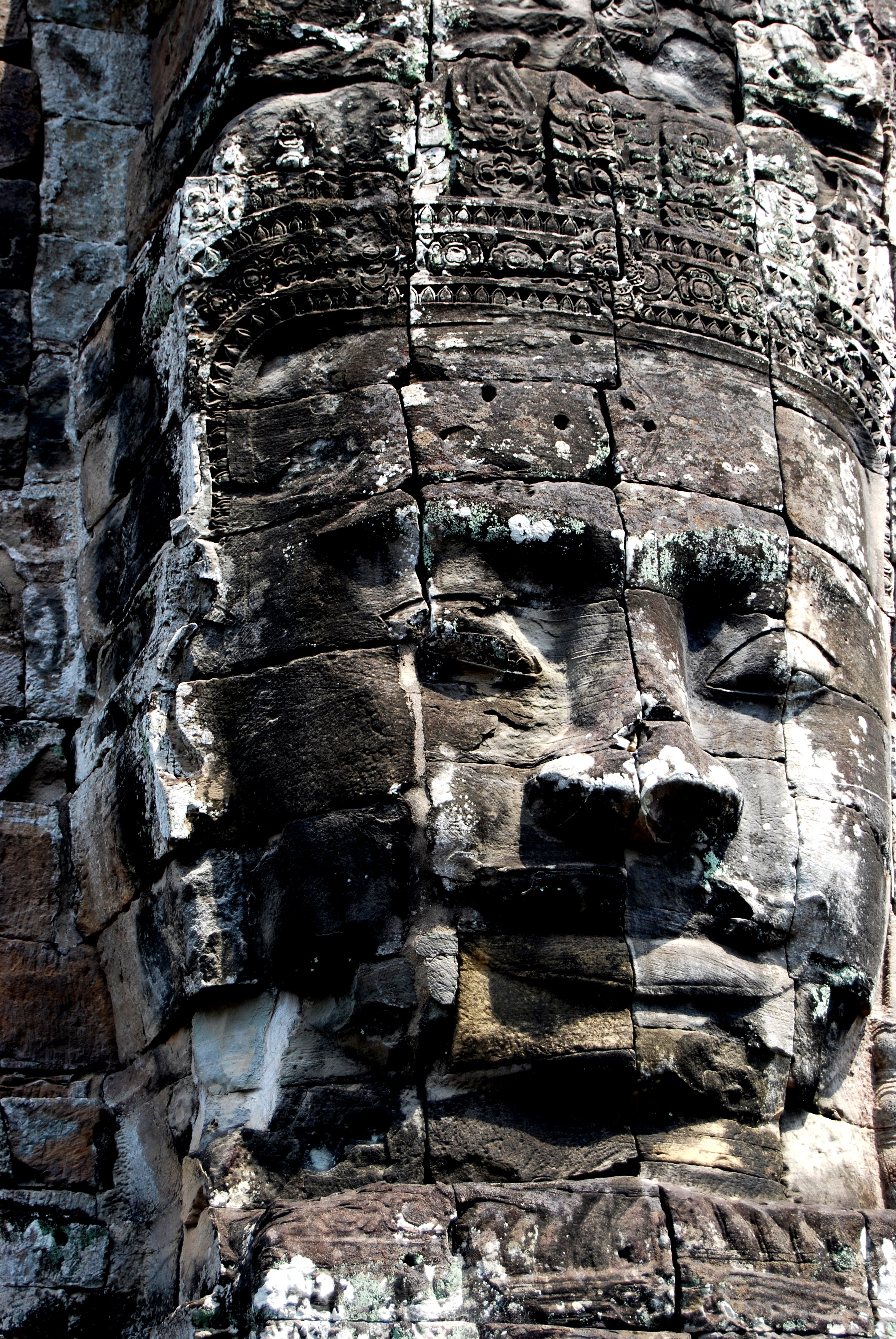

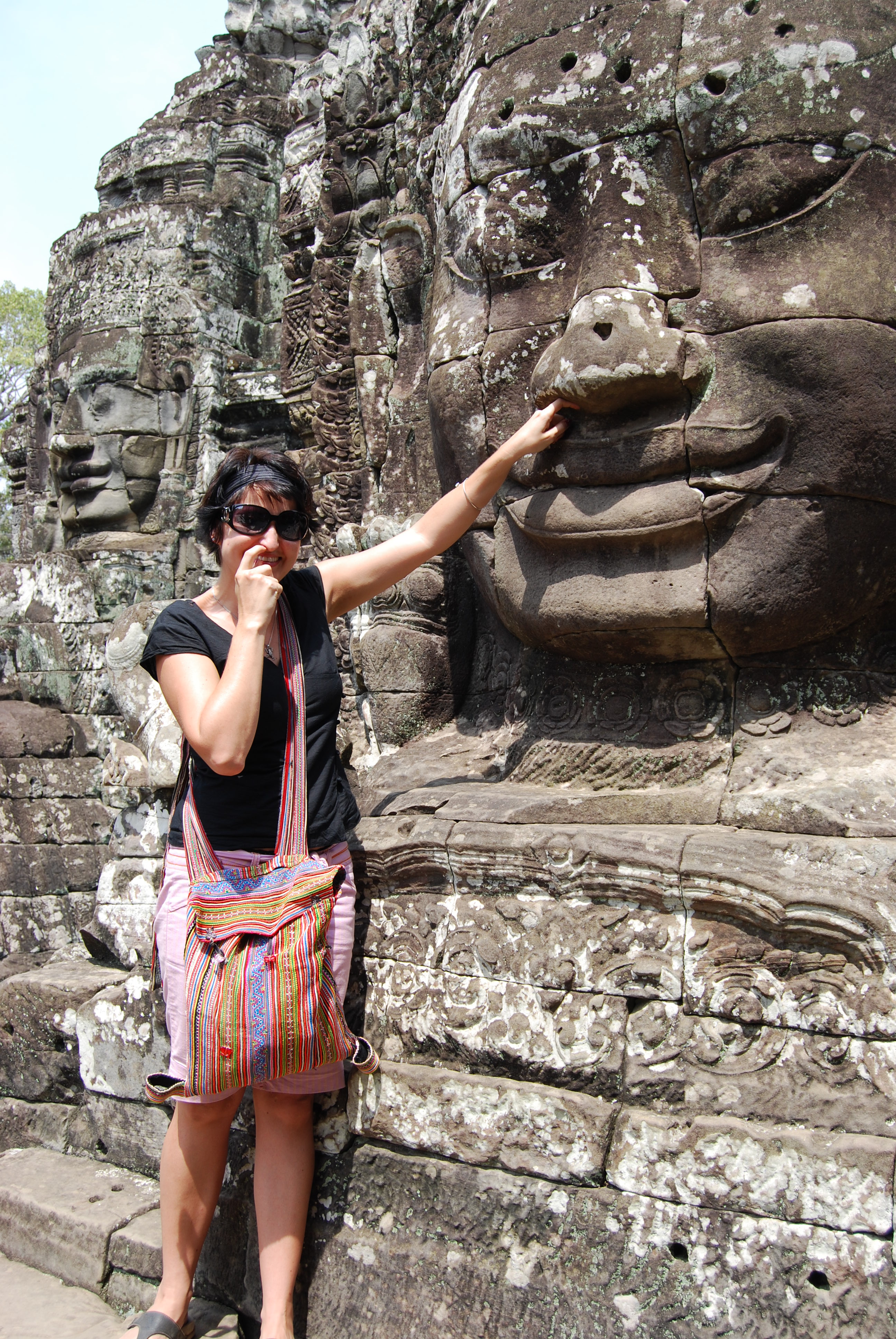
I didn’t realise how huge those faces were – your hand can fit in a nostril! amazing.
LikeLike
They are massive!!!
LikeLike
Reblogged this on Just Go Places and commented:
Bayon Temple, Cambodia
LikeLike
A huge thank you for the re-blog!!
LikeLike
I loved Ankor Wat, and Bayon was one of the best temples. Enjoy Siem Reap!
LikeLike
Thank you!! We had a fabulous time and I would love to go back again someday and explore the temples I never got to see this time around.
LikeLike
Not much more to say! Your captures are awesome!
LikeLike
Thank you!! This is such an amazing temple, definitely the most beautiful I have ever seen!
LikeLike
incredible place!
LikeLike
It was my favourite temple in the whole of Angkor Wat!
LikeLike
They are so beautiful and also mysterious, thanks for sharing, it is really nice to see them. Lakshmi
LikeLike
Thanks Lakshmi! They are stunning and to think nobody really knows for sure who they are supposed to represent.
LikeLike